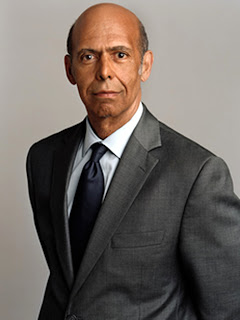BLOOMINGTON, Ind. -- Stephanie Power-Carter, new director of the Neal-Marshall Black Culture Center, understands the importance of academic excellence and community of family and hopes to use that knowledge to continue an inviting and warm tradition at Indiana University Bloomington.
Power-Carter grew up in rural Georgia and is a first-generation college graduate. Her mother was assistant director of a daycare center, and her father did paint and auto work for General Motors.
"My parents instilled in me and my sister the value of a good education, hard work and being responsible. We had to excel academically," she said. "My grandparents played a huge role, and I also had an extended family that was really big and had high expectations."
Power-Carter, also an associate professor in the IU School of Education, expects to instill an academically nurturing and caring environment at the Neal-Marshall Black Culture Center, which is located at 275 N. Jordan Ave. in Bloomington. She succeeded Audrey McCluskey as its director on Aug. 1.
Only the third director since the center's building was dedicated in 2002, Power-Carter sees four tenets as being essential to its success: academic excellence, student services, recruitment and retention, and community building. She is seeking to create an environment that makes the IU Bloomington campus seem a little smaller by offering student services and academic support and by partnering with other campus resources.
Power-Carter remembers when she stepped onto the campus of the University of Georgia, which has an enrollment similar in size and makeup as IU Bloomington. Classes were larger, and rules in academia were sometimes different from those in her community.
"I have that sense of wanting to make sure students connect to something or someone," said Power-Carter, who also taught high school in Athens, Ga. "It is important to help our students, particularly first-generation, navigate our campus. I believe in giving back and investing in our youth. Someone clearly invested in me -- I didn't get here all by myself. I can remember all of my teachers and all the people in the community who encouraged me."
Power-Carter earned her doctorate in language and literacy education from Peabody College at Vanderbilt University. She joined the IU faculty in 2002, after teaching for one year at the University of Illinois-Chicago.
At IU, she also has founded the African American Read-In, a campus-wide program that celebrates black writers; the Closing the Gap Community Literacy Intervention Program; and Sistahs Who Care, which mentors about 70 young women of color each year.
Power-Carter notes that the building housing the Neal-Marshall center also is home to the African American Arts Institute, the Office of Diversity Education and other IU staff.
"All of us work together to support our students," she said.
This fall, Power-Carter inaugurated a new tradition. About 40 freshman students received a special pin in a ceremony on Sept. 8, attended by IU faculty, staff, alumni and local community members. The pin features the Neal-Marshall Center's new logo, adapted from an Adinkra symbol of the Asante people of the Ivory Coast in Africa.
The name of the symbol, in the Akan language, is "Nea onnim no sua a ohu," which means "knowledge comes by learning."
"I want them to know that they're here, but that they're following in the footsteps of some really great black faculty and staff, and because of the contributions that they've made -- they are here," Power-Carter said. "I want them to understand that there's great responsibility with coming to Indiana University. Yes, it's about community and social events, but it's also about being academically responsible and making contributions to Indiana University and their communities.
"We invited faculty and staff to the pinning ceremony to show students that they're surrounded by people who want to see them succeed," she added.
Participants in this new tradition also can look forward to a similar ceremony in four years to celebrate what they've achieved.
Power-Carter plans to continue other popular activities at the center, including study nights, Black Student Orientation, the Critical Issues Lecture Series, Black Knowledge Bowl and the Kwanzaa and Juneteenth celebrations. Other new activities will include a book club co-sponsored by the Atkins Living-Learning Center and recognition events for outstanding black faculty members and athletes at IU.
"Different people find different things to feel a sense of connection," she said. "I will definitely continue to emphasize that that is a place where our students are welcome and where they know they can come and find someone who will listen, care and be willing to nurture them."
Media Contacts: George Vlahakis University Communications vlahakis@iu.edu 812-855-0846 Stephanie Power-Carter Neal-Marshall Black Culture Center stecarte@indiana.edu 812-855-9271










































